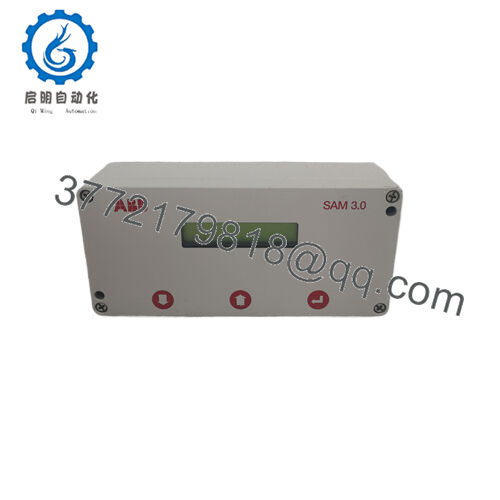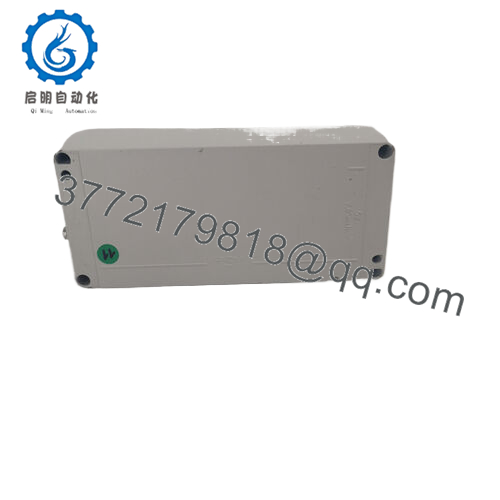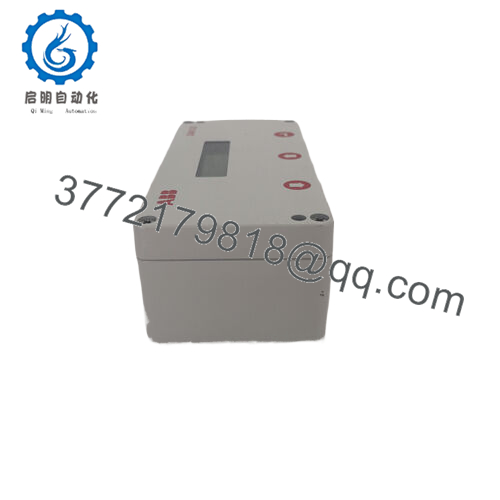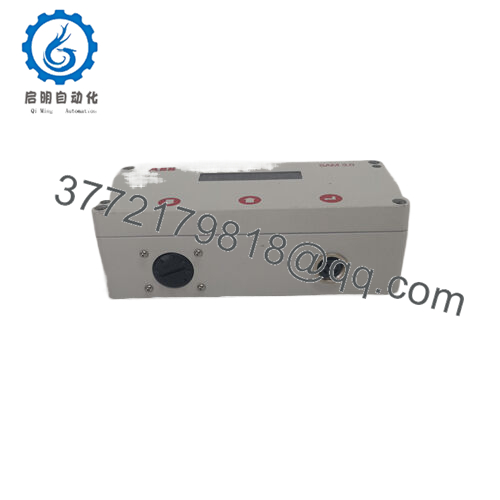Description
In the high-voltage landscapes of industrial automation, protecting critical infrastructure from transient surges—whether from lightning strikes or internal switching—demands vigilant, data-driven oversight to prevent cascading failures in process control systems. Engineers in power distribution or substation environments often contend with the opacity of surge arrester health: undetected degradation leads to insulation breakdowns, unplanned outages, or escalated repair costs, especially where I/O signals from monitoring points must integrate reliably into broader SCADA frameworks. The ABB SAM3.0 steps in as an advanced surge arrester monitoring system, delivering precise leakage current analysis and counter metrics to forecast failures before they disrupt operations.
- SAM3.0
This unit is indispensable in scenarios where high reliability underpins grid stability—picture a wind farm substation weathering coastal storms, or an urban utility hub managing peak loads amid urban sprawl. Without proactive tools like the ABB SAM3.0, maintenance teams rely on reactive inspections that overlook subtle inrush patterns, risking non-compliance with standards like IEC 60099-5 and inflating lifecycle expenses. It addresses these by continuously tracking total leakage, third-harmonic components, and surge events via capacitive coupling, providing digital readouts that flag anomalies early, thus enabling targeted interventions in modular protection schemes.
Engineers value its role in process control for demystifying arrester performance: optical fiber links ensure noise-immune data transmission, while configurable thresholds align with site-specific risks, from GIS enclosures to open-air arrays. For those evaluating substation upgrades, the ABB SAM3.0 isn’t just a sensor suite—it’s a strategic sentinel that minimizes downtime in high-stakes I/O architectures, where surge data feeds directly into DCS for automated alarming. By illuminating the invisible threats of overvoltages, it empowers utilities to sustain resilient networks, curbing losses from transient-induced faults and aligning with the push for smarter, more predictive industrial automation.
How the Product Works & Fits into a System
At its essence, the ABB SAM3.0 operates as a non-invasive diagnostic hub, clamping onto surge arrester phases to measure leakage currents through high-voltage capacitors, then processing signals to quantify steady-state losses and transient impulses down to 100 A peaks. It discriminates between capacitive and resistive components—key for aging assessments—displaying values on an LCD interface or relaying them via RS-232/485 for remote polling, with counters resetting manually or on command to track cumulative exposure. An embedded microcontroller applies algorithms to compute third-harmonic ratios, alerting via potential-free contacts when thresholds breach, all powered by a low-voltage auxiliary supply for field longevity.
In the automation stack, this system embeds at the asset layer of substation I/O, interfacing with ABB’s Relion series relays or 800xA DCS over Modbus RTU, where surge metrics populate trending dashboards for operator review. Mounted externally on arrester bases or within GIS compartments, it leverages fiber-optic paths for up to 100 m separation from evaluation units, mitigating EMI in high-field zones while supporting three-phase monitoring in a single enclosure. Diagnostics include self-calibration routines and event logging to flash memory, streamable to SCADA for correlation with breaker trips or fault recorders, enhancing system-wide visibility without dedicated cabling overhauls.
Its adaptability shines in redundant setups: pair units across phases for holistic coverage, and integrate with IEC 61850 gateways for substation automation, offloading raw data crunching to central controllers. For legacy grids, the ABB SAM3.0 bridges analog arresters with digital twins, enabling retrofit without excavation—think voltage dividers feeding calibrated outputs to PLC analogs. This edge positioning accelerates fault attribution, say linking a switching surge to a specific MOA, while low-power design (under 5 W) suits solar-assisted remote installs. Far from an isolated gadget, it knits into protective architectures, turning disparate surge events into unified intelligence that bolsters process control resilience.
| Specification | Details |
|---|---|
| Model Number | SAM3.0 |
| Brand | ABB |
| Type | Surge Arrester Monitoring System |
| Input Voltage | 24-265 V AC/DC (auxiliary) |
| Operating Temp Range | -40°C to +70°C |
| Mounting Style | Clamp-on / Panel Mount |
| Dimensions | 180 x 140 x 80 mm (Evaluation Unit) |
| Weight | 1.8 kg |
| Interface/Bus | RS-232/485, Fiber Optic |
| Compliance | CE, IEC 60099-5, RoHS |
| Supported Protocols | Modbus RTU, IEC 61850 (via gateway) |
| Typical Power Draw | 4 W |
Real-World Benefits
Deploying the ABB SAM3.0 instills a proactive edge in surge protection, engineered to discern degradation trends with harmonic precision that averts catastrophic failures, often extending arrester life by 20-30% through timely strand replacements rather than full swaps. In practice, this means fewer forced outages during storm seasons—utilities report slashed emergency responses, as real-time leakage alerts cue mobile crews before currents spike to failure thresholds, preserving grid integrity and customer satisfaction amid rising renewables volatility.
The system’s fiber-isolated design further eases integration burdens, syncing effortlessly with existing RTUs to enrich HMI views without protocol converters, which trims commissioning hours and fosters a unified diagnostic narrative across substations. Maintenance shifts from calendar-driven to condition-led, with logged counter data informing predictive models that optimize spare stocking and cut false alarms by half, yielding ROI through deferred capital spends. A coastal transmission operator, for instance, leveraged its third-harmonic tracking to preempt salt-induced corrosion, dodging a multi-MW blackout and reallocating budgets to capacity upgrades.
Deeper still, it cultivates operational foresight: by quantifying inrush impacts, engineers refine switching protocols, reducing mechanical stresses on breakers and unlocking efficiency gains in dynamic load profiles. This ensures long-term performance in harsh exposures, from seismic zones to polluted atmospheres, while bolstering compliance audits with timestamped evidence. For grid stewards balancing reliability and renewal, the ABB SAM3.0 delivers enduring value—not as a monitor, but as a foresight engine that transforms surge risks into managed assets, amplifying throughput where stability spells sustainability.
Typical Use Cases
In high-voltage substations, the ABB SAM3.0 oversees metal-oxide varistor (MOV) arresters in 132 kV bays, capturing leakage spikes from atmospheric discharges to trigger remote diagnostics, its wide temp resilience suiting outdoor enclosures battered by monsoons and ensuring critical system uptime per NERC standards. Fast polling cycles under 1 s integrate with SEL relays for automated reporting, vital in process control environments where surge data informs load shedding.
Renewable integration parks deploy the ABB SAM3.0 across inverter-coupled lines, monitoring arresters for ferroresonance risks amid variable solar inputs, with clamp sensors shrugging off dust and humidity to deliver high-reliability I/O signals for SCADA oversight. Harsh conditions like desert winds highlight its fiber immunity, making it a staple in used in wind farms chasing IEC-compliant protection without compromising generation flows.
Industrial plants with private grids, such as aluminum smelters, harness the ABB SAM3.0 for capacitor bank safeguards, tallying switching surges to prevent resonance failures, its modular clamps fitting retrofits in confined GIS setups. Continuous uptime demands fast data cycles for tying metrics to DCS alarms, underscoring its fit in heavy process control where surge events could halt electrolytic pots. Across utilities, renewables, and manufacturing, the ABB SAM3.0 excels in transient-prone networks, fortifying automation against the unseen with precision that sustains output.
Compatible or Alternative Products
SAM 2.0 – Predecessor monitoring system for basic leakage tracking in legacy low-voltage arresters.
REA 100 – Compact surge counter add-on for counter-only needs in space-tight distribution panels.
TLM 2.0 – Leakage meter companion for standalone third-harmonic analysis in MOV diagnostics.
PMS 3.0 – Power monitoring suite for integrating SAM data into substation asset frameworks.
REA 103 – Enhanced counter with peak current logging for lightning-heavy tropical installs.
UCA 3.0 – Universal coupling adapter for retrofitting SAM3.0 to non-standard arrester bases.
SAM3.0-7M – Extended GIS variant with 7m support for enclosed high-voltage compartments.
IEC 61850 Gateway – Protocol converter for elevating SAM Modbus outputs to networked SCADA.
7. Setup Notes & Maintenance Insights
When commissioning the ABB SAM3.0, prioritize phase alignment—secure clamps to arrester risers with torque under 5 Nm to avoid microphonics, and route fiber cables in conduit away from live conductors to preserve signal-to-noise ratios above 60 dB. Auxiliary power validation is essential: test for 50 V DC tolerance during surges, and baseline leakage with a micro-ohmmeter pre-clamp to calibrate offsets, as ambient pollution can skew initial reads by 10-20 µA. For multi-phase arrays, synchronize counters via the RS-485 daisy chain, confirming baud rates match your RTU to prevent desync in event logging.
Sustained reliability stems from measured oversight that slots into annual patrols without fanfare. Quarterly, query the LCD for counter totals and reset if thresholds hit, cross-referencing against weather logs to validate inrush sensitivity—false positives often trace to loose grounds, remedied with dielectric grease on terminals. Biannually, inspect fiber ends for haze with a scope, cleaning via isopropyl if attenuation creeps over 1 dB/km, and run the self-test mode to verify relay contacts under simulated loads. In polluted sites, a silicone boot over clamps wards off conductive dust, but audit for creepage every six months to uphold IP65 seals. Leverage Modbus polls for trend exports, spotting resistive rises that signal strand faults early. These field-tested steps keep the ABB SAM3.0 as a steadfast watcher, channeling attention to strategic tweaks over routine rescues.






 WhatsApp: +86 16626708626
WhatsApp: +86 16626708626 Email:
Email:  Phone: +86 16626708626
Phone: +86 16626708626


